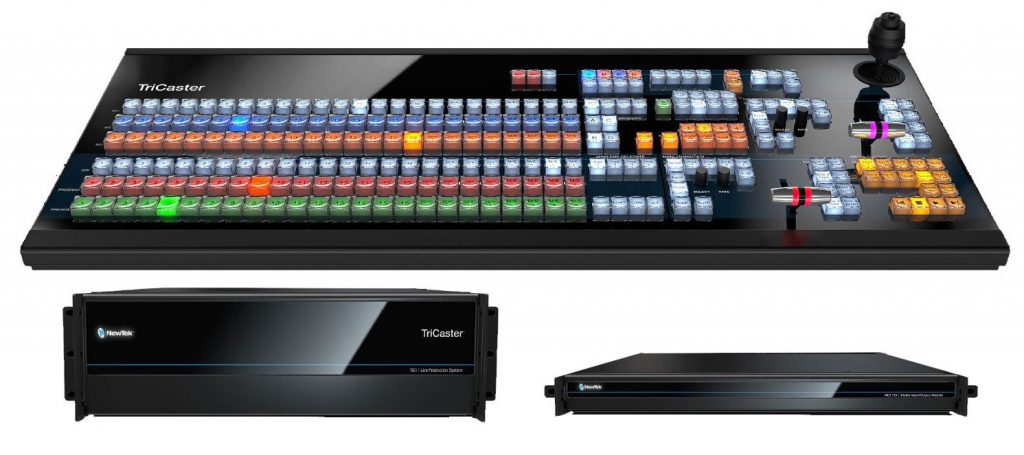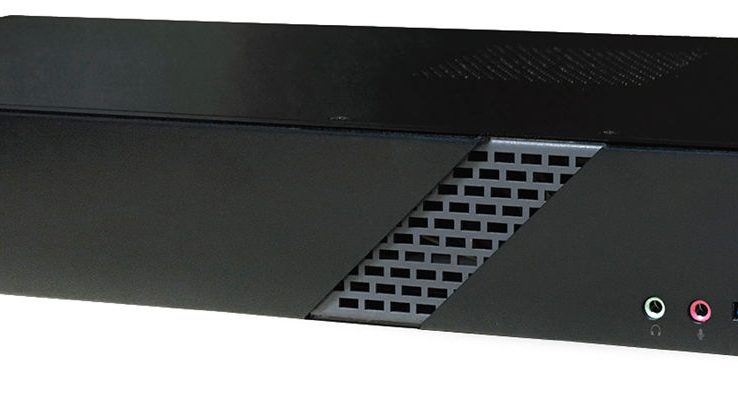Gearing Up for Streaming for Worship
By Adam Noyes
There are dozens of platforms offering live streaming for affordable rates, and churches can stream directly to their core audience in tailored, personalized ways that weren’t possible a decade or two ago. Here we’ll emphasize gear that will work best for houses of worship in today’s high-tech streaming landscape.
Check out Streaming Media’s Field Guide to Worship Streaming, sponsored by Broadfield Distributing.
Religious organizations, be they houses of worship or faith-based charities, have been broadcasting over airwaves of all types since the earliest mediums were available. In the early 20th century, radio was the preferred medium, but as soon as television came along, that became the preferred outlet for religious teaching and evangelism.
As with every other aspect of society, the internet changed it all. As high-speed broadband connections became affordable, churches gained the ability to broadcast their message to the world without needing millions in capital to set up their own channel or pay a commercial broadcaster for airtime.
Now the next stage of evolution in streaming for worship has arrived. There are dozens of platforms offering live streaming for affordable rates, and churches can stream directly to their core audience in tailored, personalized ways that weren’t possible a decade or two ago. One thing that hasn’t changed throughout all of this progress is the need for high-quality, professional gear to capture and transmit the message. Here we’ll emphasize gear that will work best for houses of worship in today’s high-tech streaming landscape.
Switcher/Streamers: The Brains of the Operation
A switcher used to switch between and combine sources for broadcast is a must for houses of worship looking to get serious about their streaming. Although a switcher and streaming appliance or encoder are not necessarily combined into one device, most pro solutions today offer them as a packaged deal. There’s no need to have separate devices anymore when one will do everything and do it well.
One of these that does switching, streaming, and more exceptionally well is the Telestream Wirecast Gear. A quick note for clarification: Telestream’s software-only solution for switching and streaming is called Wirecast, while their hardware is called Wirecast Gear. For simplification, we’ll be referring to the hardware option as the Gear.
The Gear comes in three different configurations to meet a range of budgets and needs. All Gear models come with the following standard options and capabilities: live stream to Facebook, YouTube, Twitter (Periscope) or RTMP (custom), FaceBook Live comment administration, NDI input and output, animated 3D graphics and titles and Telestream Wirecast Pro production software, Telestream Switch 4 (playback, inspection and correction for video clips) with Windows 10 Professional.
The Gear 110 is priced at $4,995. It has four HDMI inputs for your cameras, presentation computers or other sources. The 250 GB hard drive can store up to about five hours of HD video. Stepping up to the Gear 210 costs $5,995 and switches your four available ports to HD-SDI. Along with this, you gain live sports, data feed, custom clocks, scoreboards and other templates and a 500 GB hard drive for up to about ten hours of HD video. The flagship Gear 230 (Figure 1, below) is priced at $7,995 and adds baseband SDI output, live social media comment creation on YouTube, Facebook and Twitter along with a 2 TB hard drive capable of up to about 40 hours of HD video. With the 230 model, you also get a Blackmagic Decklink Duo 2 for input rather than the Magewell ProCapture included with the lower models.

Figure 1. Telestream Wirecast Gear 230
Since all Wirecast Gear models come with Telestream’s Wirecast Pro software, let’s take a look at what you get with your purchase. The expanded inputs and outputs with Pro allow you to utilize IP/network cameras and streams, Teradek feeds, baseband HDMI/SDI, 17-channel multi-viewer and NDI program output. There are also expanded audio capabilities. You can add virtual sets and backgrounds and directly control PTZ cameras within the software. Churches can even link in missionaries or up to seven other remote guests to their video feed with Wirecast Rendezvous video conferencing. If you only need the Wirecast software, you can purchase the Pro level for $699, while the Studio and One levels are $449 and $249 respectively.
In the same category as Telestream’s Wirecast Gear solutions is NewTek’s TriCaster series of switcher/streaming appliances. The TriCaster comes in three different base configurations. There’s the TC Mini Advanced ($7,995), mid-level TC410 ($9,995) and flagship TC1 ($14,995). As the top-of-the-line product in the TriCaster family, the TC1 (Figure 2, below) offers high-end, high-performance features that the most demanding broadcasters require.

Figure 2. The NDI-ready TriCaster TC1
With NDI, the TC1 supports up to 16 4K resolution inputs at 60 FPS so you can utilize the full-sensor capabilities of any 4K cameras in your setup. The four SDI inputs support 1080p inputs. The TC1 can control sixteen different PTZ sources via serial or network protocols. This means that it’s both present- and future-proofed, no matter what era your cameras are from. You can also set up four independent video outputs that can send simultaneously over SDI and NDI. With this you could set up an in-house CCTV system within your building while also sending out a live stream and offline recording. Of course, it comes with a whole host of keyers, effects, titling options, and virtual sets. And its 6TB of internal storage will keep your archived productions on tap for easy access and recall. The TC1 is also offered in either a 2RU or 3RU chassis. The advantage of the 3RU is the addition of a 500W redundant PSU versus the 2RU’s 400W redundant PSU.
Finally, let’s look at a unique option for your streaming and switching hub: SlingStudio (Figure 3, below). SlingStudio is a modular system all built around the $999 SlingStudio Hub. What sets the SlingStudio system apart from similar systems is that modularity and flexibility since it’s purposefully designed to be a wireless system. While wireless systems have their limitations and issues, I can testify based on personal use experience that the SlingStudio does wireless right.

Figure 3. The SlingMedia SlingStudio
The Hub supports up to four wireless HDMI sources that are connected with the CameraLink ($349) units. A CameraLink is required for each source included in the broadcast. With the free SlingStudio Capture app for either iOS or Android, you can also incorporate iPhone 6 or higher and Android 5.0 or higher devices as video sources. This could be useful for an inconspicuous roving camera on stage or in the congregation.
All of this can then be controlled by the SlingStudio Console app for either iPad or Mac. This full-featured software switches sources, live streams to social media channels and handles graphics, titles and keyers. The system also records both your program and ISOs for each source for later editing.
Streaming Appliances: For Simpler Streams
For houses of worship wanting a simpler solution with fewer sources, there are some smaller options that are still full of pro features. The Epiphan Pearl-2 (Figure 4, below) is one of those solutions. The Pearl-2 comes in three different configurations: the Pearl-2 Base ($6,375), Pearl-2 Rackmount ($6,975) and Pearl-2 Rackmount Twin ($13,950). The Pearl-2 Base and Rackmount versions are essentially the same features and functionality but with different form factors. The Rackmount, as its name suggests, is ready to mount in your AV rack (2RU) right out of the box. The Rackmount option can be particularly useful for portable church solutions that have to be set up and broken down each week. The more expensive Rackmount Twin is the same form factor as the Rackmount, but it includes two Pearl-2 units within the same box. This effectively doubles your capabilities.

Figure 4. Epiphan Pearl-2 Rackmount
Pearl-2 is built off of Epiphan’s popular original Pearl, known for its compact size and professional features. Pearl-2 has an optional 4K add-on which allows you to be future ready without investing in unnecessary hardware if you’re not there yet. Of course, it can stream to popular social media platforms like Facebook and YouTube, but it’s also ready for custom solutions like Wowza, Panopto, Kaltura and Ustream. It even offers secure streaming via the RTMPS protocol. It features a small, intuitive touchscreen interface on the front of the device, but it can also be controlled with a tablet, PC, or mobile device. The back of the unit offers up two 4K HDMI inputs, two HDMI 1.4a inputs, two 12G SDI inputs, three NDI inputs, and four XLR inputs.
A lower-cost alternative for the Pearl-2 is the Matrox Monarch HD (Figure 5, below). If your house of worship utilizes only a single HDMI source for streaming, the Monarch HD provides professional-level quality and features at a much lower price point ($995). The HDMI port supports up to 1920×1080 at 60fps. Audio input can be achieved by either extracting embedded HDMI audio or a separate audio input. The Monarch HD can stream to the usual CDNs like Facebook and YouTube, but it can also stream on a LAN for a CCTV-like setup. Configuring the system is easy using the browser-based control interface from anywhere on the internet.

Figure 5. Matrox Monarch HD
For a low-cost single-source stream that’s also super-portable, take a look at the LiveU Solo ($995). The Solo (Figure 6, below) is offered in either HDMI or SDI input versions. Both offer a robust streaming solution by way of bonding. Bonding allows you to connect to multiple internet connections simultaneously to increase your upload bandwidth and provide greater reliability. If one connection goes down, you still have other connections available to keep your stream for dropping out. You can use a combination of WiFi, Ethernet, and up to two cellular modems in just one Solo.

Figure 6. LiveU Solo
Cameras: The Final Piece of the Puzzle
No video system exists without cameras, and not any camera will do for pro-level streams. You need cameras that perform well for hours on end, year after year. The best cameras for most churches are PTZ cameras. These compact cameras allow for greater freedom-of-installation-location since they’re controlled remotely. They also offer tremendous value compared to much larger options.
One of the most popular PTZ manufacturers in the US is PTZOptics. They offer a huge range of cameras for every budget and technical requirement. Their cameras come in SDI, NDI and USB options, while the lenses come in 12x, 20x, and 30x (Figure 7, below) configurations. Most of their cameras are priced in the $1,750-2,500 range. They also sell hardware controllers in either IP or Serial protocols. But one of the best parts of PTZOptics is their dedication to DIY users. Not only do they offer their own open source software control solution, they openly promote alternative software controllers available elsewhere.

Figure 7. PTZOptics 30x-NDI PTZ camera
Another relative newcomer to the world of PTZ cameras is Australian manufacturer BirdDog. At $2,799, the BirdDog P200 (Figure 8, below) hits the sweet spot of price and features for churches. What truly stands out about BirdDog cameras is that they’re all NDI-capable, but they include HDMI and SDI ports as well. Inside, the P200 sports Sony internals for ultimate image quality. The cameras will integrate into any existing production ecosystems and can be configured and controlled either over a web interface or directly within software that supports PTZ control.

Figure 8. BirdDog P200 PTZ camera
For houses of worship, there’s never been a better time to get into broadcasting. A video stream can not only impact those in your congregation that can’t always attend in person, but it can touch lives around the globe that you may never meet. Solutions like those discussed here are the first steps in the right direction towards a robust, professional and reliable stream that your flock can count on for years to come.
Check out the full article HERE

